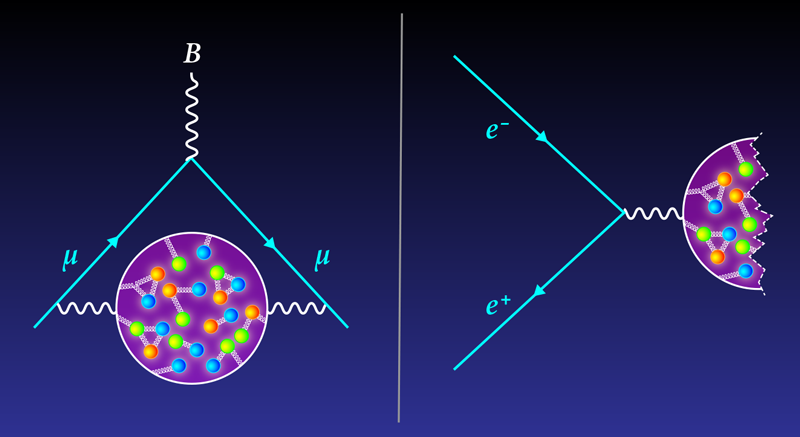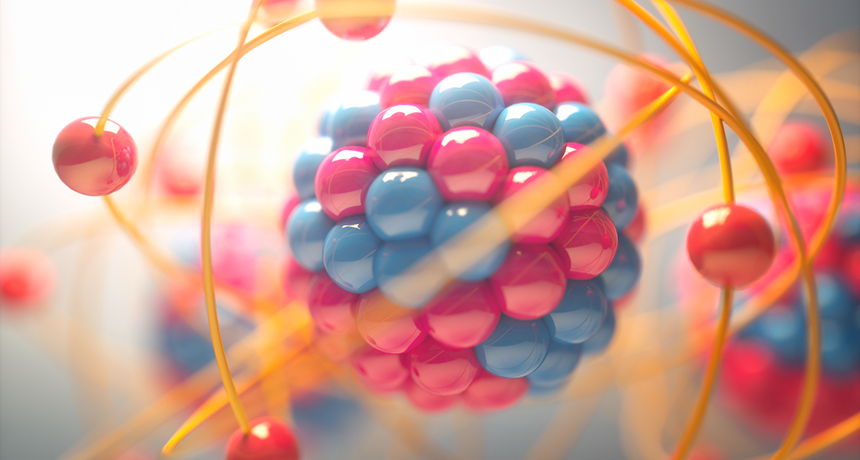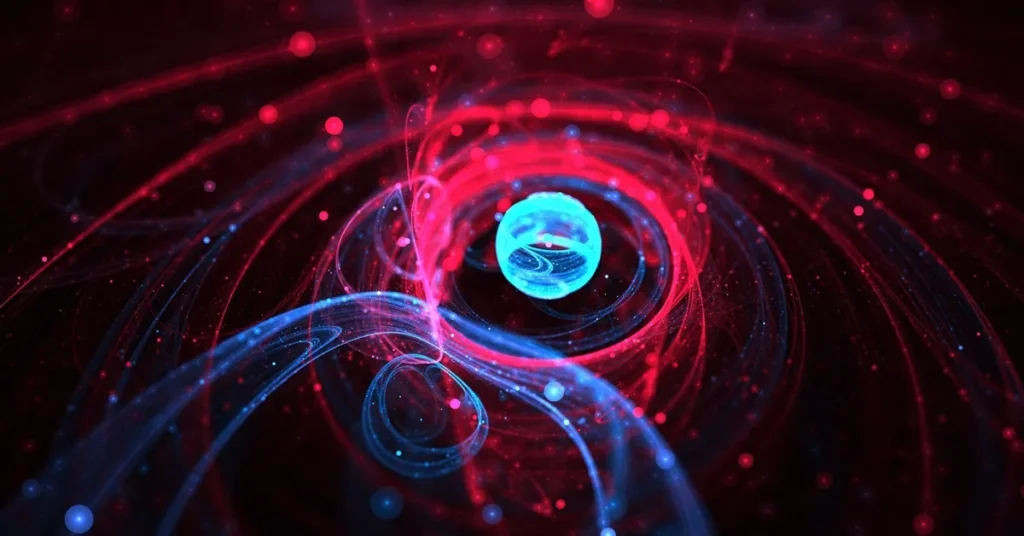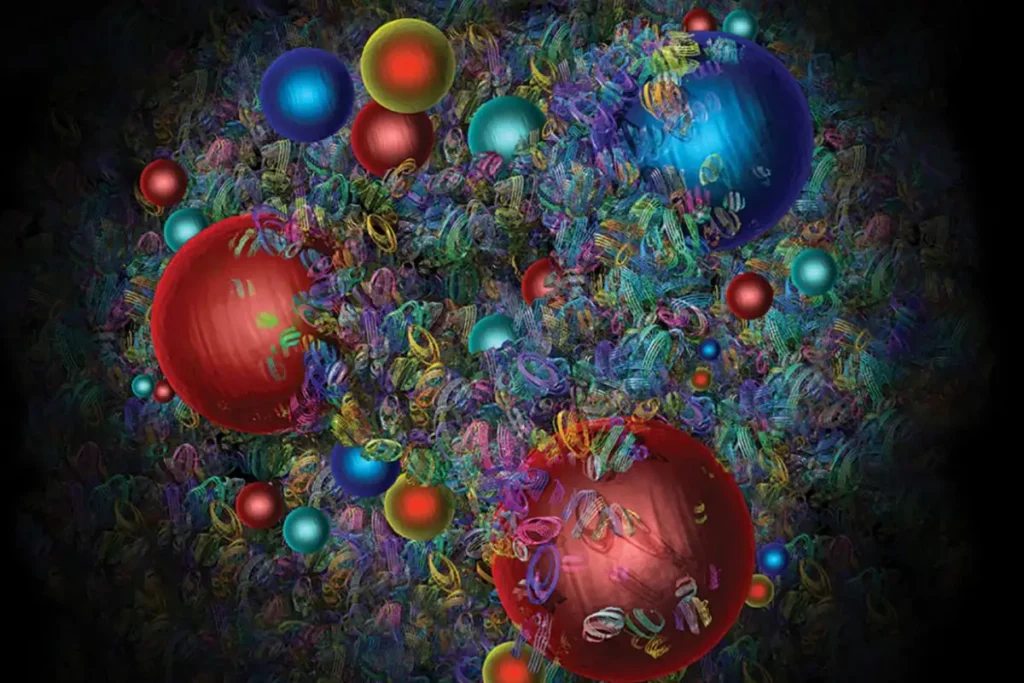Scientists have long been puzzled by the mass of the proton, a key component of atoms. Recent research led by Yi-Bo Yang of Michigan State University delved into this mystery. They used quantum chromodynamics (QCD) to break down the proton’s mass into four components.
These include the mass of its constituent quarks, but surprisingly, even if quarks had no mass, the proton would retain most of its mass. This indicates other factors play significant roles.
This study illuminates the complexities of particle physics, emphasizing the significance of advanced computational methods like lattice QCD. These methods are crucial for comprehending the fundamental nature of matter.
Unraveling the Proton’s Enigma

In the intricate dance of particle physics, the proton stands as a fundamental player, embodying much of the mass that constructs the universe. Yet, for years, the origins of the proton’s mass have shrouded scientists in mystery. Now, a groundbreaking study spearheaded by Yi-Bo Yang of Michigan State University and his team has shed unprecedented light on this enigma, offering a meticulous dissection of the proton’s mass through the lens of quantum chromodynamics (QCD).
At the heart of the proton lie its constituent particles: quarks and gluons. These elementary entities, governed by the laws of quantum mechanics, comprise the bulk of the proton’s mass. However, the mass of these quarks alone falls far short of explaining the proton’s total mass, leaving physicists grappling with unanswered questions.
Quantum Chromodynamics Unveiling the Truth

Enter quantum chromodynamics, the bedrock of our understanding of the strong interaction within the nucleus. Through the lens of lattice QCD, a powerful computational technique, Yang and his collaborators embarked on a journey to unravel the intricate tapestry of the proton’s mass. By placing quarks on a lattice and gluons between them, they ventured where few had tread before, quantifying four distinct contributions to the proton’s mass.
Deciphering the Contributions
The team’s groundbreaking work unveiled four crucial contributors to the proton’s mass:
- Quark Condensate: Constituting approximately 9% of the proton’s mass, this term encapsulates the combined effects of up, down, and virtual strange quarks. Remarkably, it would vanish if quark masses were zero, highlighting its fundamental role in the proton’s mass.
- Quark Energy: Accounting for around 32% of the proton’s mass, this term represents the kinetic energy inherent in confined quarks. It underscores the dynamic interplay between quarks within the proton’s confines.
- Gluonic Field Strength Energy: Forming approximately 37% of the proton’s mass, this term reflects the energy stored within the confined gluons. It highlights the pivotal role of gluons in shaping the proton’s mass landscape.
- Anomalous Gluonic Contribution: Comprising about 23% of the proton’s mass, this term embodies a purely quantum effect, stemming from the QCD mass scale. It underscores the intricate quantum dynamics underlying the proton’s mass.
Towards a Deeper Understanding

Yang and his colleagues’ groundbreaking research not only elucidates the intricate mechanisms governing the proton’s mass but also paves the way for a new era of quantitative predictions in nuclear physics.
Armed with the power of lattice QCD and advanced computational methods, scientists are poised to delve deeper into the substructure of nucleons. This exploration promises to unlock insights that transcend the boundaries of the standard model.
Implications and Future Prospects
The implications of this research extend far beyond the realm of theoretical physics. As experimental endeavors probe the mysteries of the universe, a quantitative understanding of nuclear physics rooted in the standard model becomes paramount.
With the advent of near-exascale computing power, the horizon of possibility expands, offering tantalizing glimpses into the inner workings of the cosmos.
FAQ’s
How to determine mass of proton?
To determine the mass of a proton, you can use the atomic molar mass and Avogadro’s number. Since one mole equals approximately 6.022e23 units and a proton weighs about 1.0079 grams, dividing the weight of a proton by Avogadro’s number gives us the mass of a single proton: approximately 1.6737e-24 grams.
Final Words
Understanding the mass of the proton is crucial for unraveling the mysteries of the universe. Through groundbreaking research, scientists have discovered that while quarks contribute, other factors play significant roles. This highlights the complexities of particle physics.
By utilizing advanced computational techniques like lattice QCD, we’ve taken a crucial step forward in comprehending the fundamental nature of matter. This research opens doors to deeper insights, paving the way for future discoveries and advancements in our understanding of the cosmos.
References
- Y.-B. Yang, J. Liang, Y.-J. Bi, Y. Chen, T. Draper, K.-F. Liu, and Z. Liu, “Proton mass decomposition from the QCD energy momentum tensor,” Phys. Rev. Lett. 121, 212001 (2018).
- X.-D. Ji, “QCD analysis of the mass structure of the nucleon,” Phys. Rev. Lett. 74, 1071 (1995).
- S. Aoki et al., “Review of lattice results concerning low-energy particle physics,” Eur. Phys. J. C 77, 112 (2017); Quarks do not have a mass in the sense that the electron does. But a mass parameter for the quarks can still be rigorously defined with a specified renormalization scheme and scale. The masses quoted by Aoki et al. are in the so-called MS-bar scheme at a scale of 2 GeV.
- S. Durr et al., “Ab initio determination of light hadron masses,” Science 322, 1224 (2008).
- A. Bazavov et al., “Up-, down-, strange-, charm-, and bottom-quark masses from four-flavor lattice QCD,” Phys. Rev. D 98, 054517 (2018).
- K-F. Liu, J. Liang, and Y.-B, Yang, “Variance reduction and cluster decomposition,” Phys. Rev. D 97, 034507 (2018).
- Y.-B. Yang, M. Gong, J. Liang, H.-W. Lin, K.-F. Liu, D. Pefkou, and P. Shanahan, “Nonperturbatively renormalized glue momentum fraction at the physical pion mass from lattice QCD,” Phys. Rev. D 98, 074506 (2018).
- Y.-B. Yang, R. Sufian, A. Alexandru, T. Draper, M.J. Glatzmaier, K.-F. Liu, and Y. Zhao, “Glue spin and helicity in the proton from lattice QCD,” Phys. Rev. Lett. 118, 102001 (2017).
- C. C. Chang et al., “A per-cent-level determination of the nucleon axial coupling from quantum chromodynamics,” Nature 558, 91 (2018).
- H.-W. Lin et al., “Parton distributions and lattice QCD calculations: A community white paper,” Prog. Part. Nucl. Phys. 100, 107 (2018).
